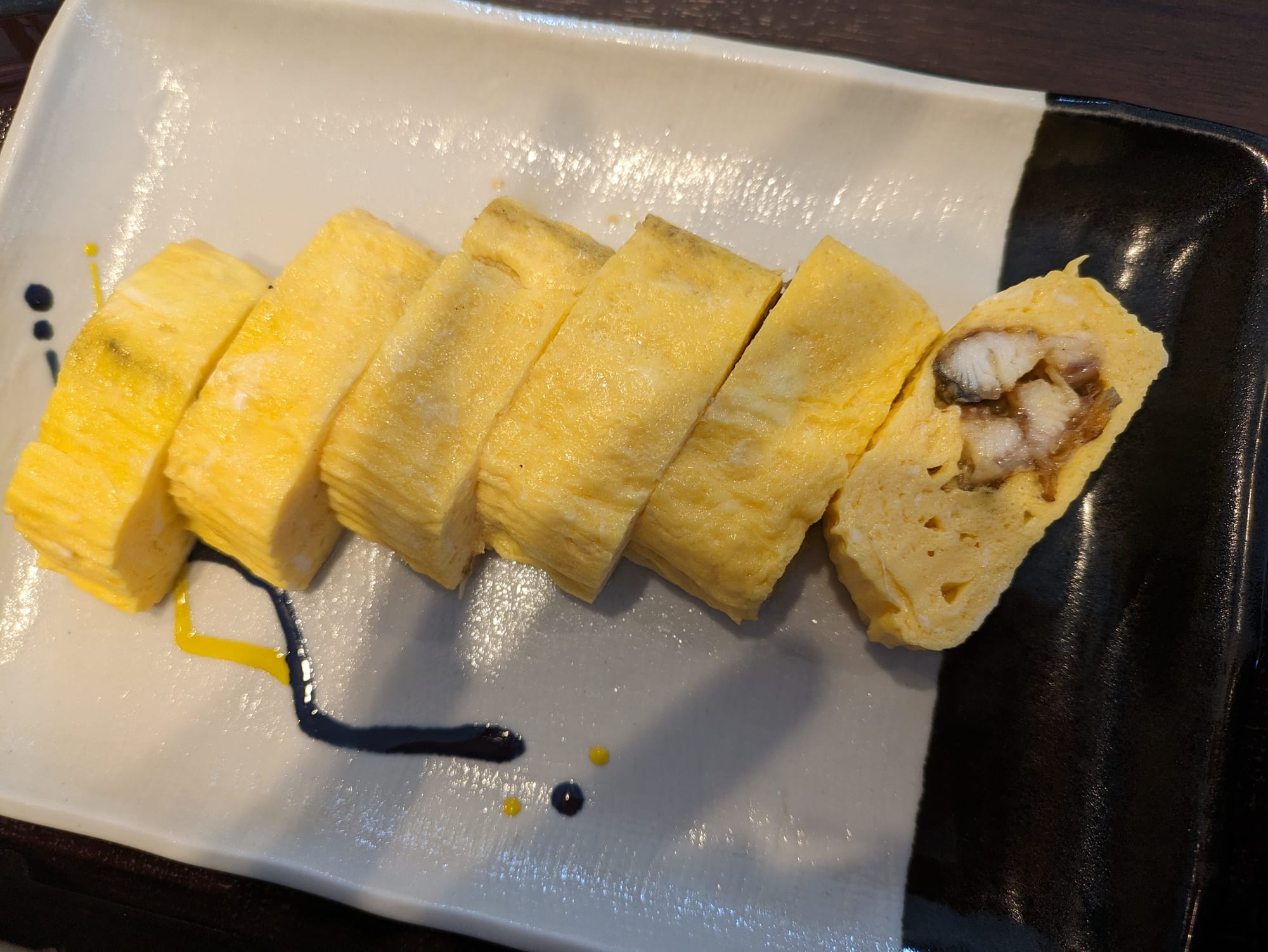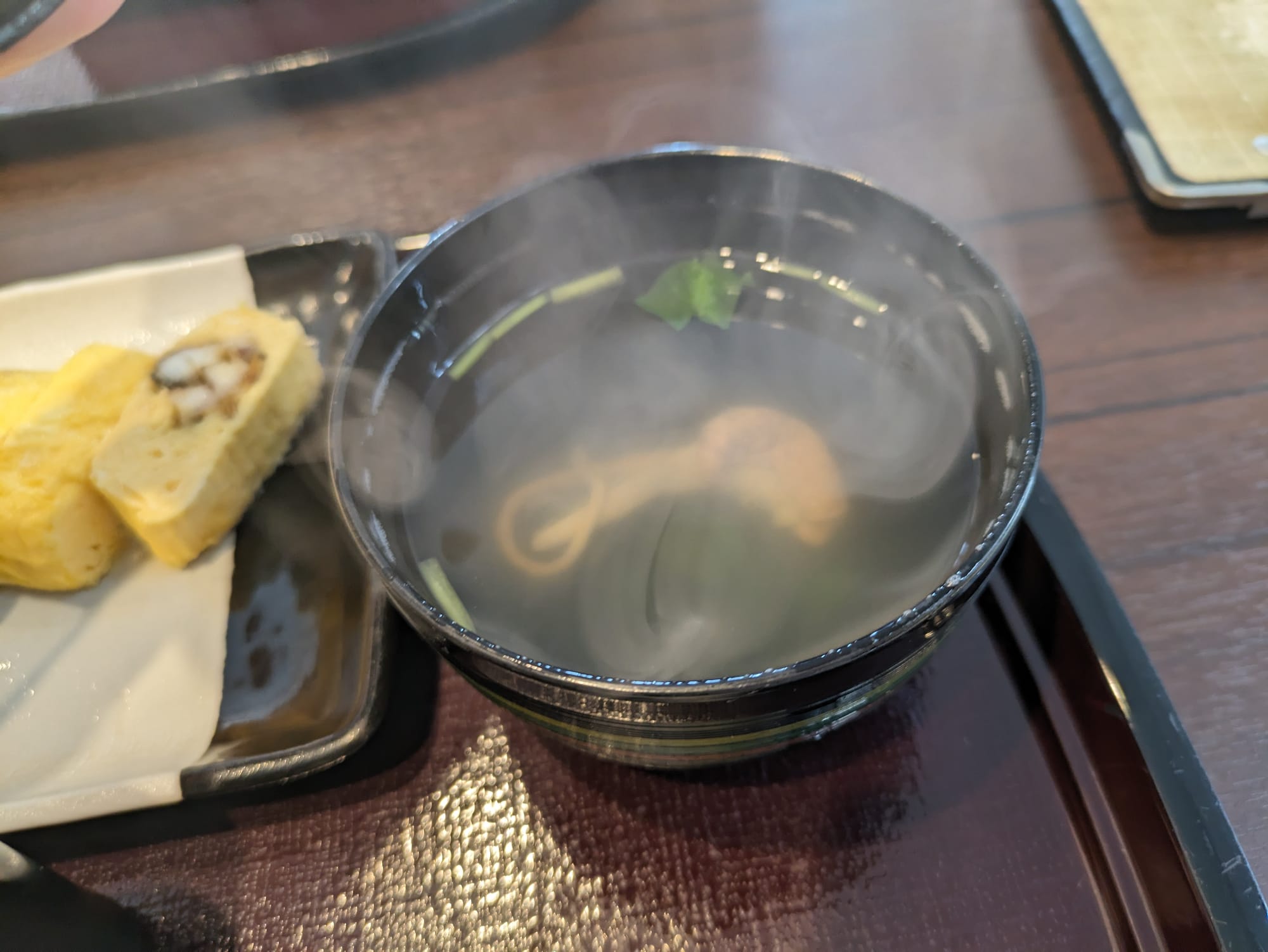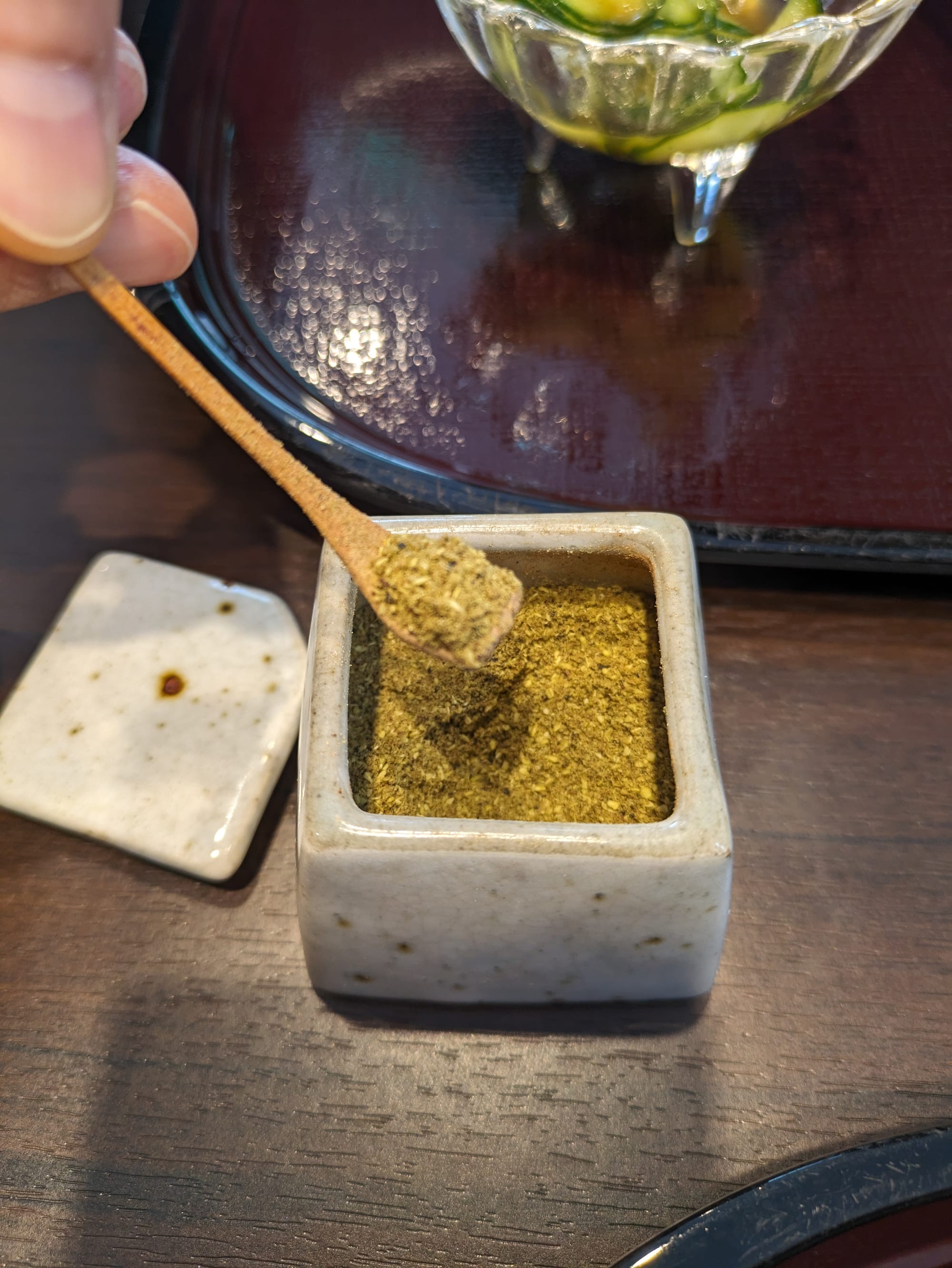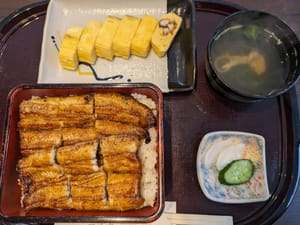単語 (Vocabulary)
価格帯 (かかくたい) - Price range
専門店 (せんもんてん) - Specialty store
帰省 (きせい) - Homecoming
タレ - Sauce
煎る (いる) - To roast (beans, seeds)
ふっくら - Fluffy (onomatopoeia)
パリッ - Crispy (onomatopoeia)
通 (つう) - Expert, Connoisseur
脂 (あぶら) - Fat
蒸す (むす) - To steam
肝 (きも) - Liver
山椒 (さんしょう) - Japanese pepper
贅沢な (ぜいたくな) - Luxurious
容器 (ようき) - Container
会話の話題 (Conversation Topics)
ランチの平均金額はいくらぐらいですか?
How much is the average cost of lunch?
うな重を食べたことがありますか?どこで食べましたか?どうでしたか?
Have you ever eaten unaju? Where did you eat it, and how was it?
あなたの国にうなぎ料理がありますか?どんな料理ですか?
Are there eel dishes in your country? If so, what kind of dishes are they?
うな重にかける山椒のように好きなスパイスがありますか?
Do you have a favorite spice, like sansho which is sprinkled on unaju?

山椒 (さんしょう) - Japanese pepper



Understanding Japanese Restaurant Rankings: 並, 上, and 特上
In Japanese restaurants, "並(Nami)," "上(Jo)," and "特上(Tokujo)" are terms used to indicate different levels of a dish, but their meaning can vary. Here’s a simple guide to understanding these rankings:
Eel (Unagi) Restaurants (where I went)
- Nami (並): Standard portion of eel. The quality of the eel is consistent across all ranks.
- Jo (上): Larger portion of eel, but the same quality as Nami.
- Tokujo (特上): The largest portion of eel, with the same quality as Nami and Jo.
Sushi and Yakiniku (Grilled Meat) Restaurants
- Nami (並): Good quality ingredients that offer a satisfying experience.
- Jo (上): Higher quality ingredients that are more refined and flavorful.
- Tokujo (特上): The finest, most premium ingredients for an exceptional dining experience.
Please note that these are general guidelines and the specific meanings of these terms can vary from one restaurant to another. Understanding these terms helps you choose dishes that best fit your appetite and budget, ensuring a great dining experience in Japan.
English Summary
View the English summary of this episode
Episode Overview
In this episode, we dive into the delicious world of Unajū, a traditional Japanese dish featuring grilled eel served over rice in a special lacquered box.
What is Unajū?
Unajū consists of:
- Grilled eel placed on top of rice
- Served in a rectangular box called a jubako
- Covered with a sweet and savory sauce
- Enhanced with a sprinkle of sansho (Japanese pepper)
Personal Experience
Recently, I had the chance to enjoy Unajū during a visit to my hometown in Kagawa, Shikoku. It was a special meal shared with my mother, making the experience even more memorable. We savored the dish at a local specialty restaurant, highlighting how Unajū is often enjoyed during significant moments with loved ones.
Kanto-style vs. Kansai-style
We explore the regional differences:
- Kanto-style (Eastern Japan):
- Eel is steamed before grilling
- Results in a light and fluffy texture
- Kansai-style (Western Japan):
- Eel is grilled without steaming
- Results in a crispier texture and more robust flavor
Recommended Side Dishes
Complement your Unajū with:
- Umaki: Rolled omelette with eel
- Kimosui: Clear soup with eel liver
These side dishes enhance the overall dining experience and complement the rich flavors of the grilled eel.
Understanding the Pricing
Unajū can range from affordable to quite luxurious, depending on:
- The restaurant
- The quality of the eel
Unajū typically comes in three levels:
- Nami (並): Contains half an eel
- Jō (上): Contains one eel
- Toku-jō (特上): Contains one and a half eels
At the restaurant I visited, the price for an Unajū "Jō" was around 3,630 yen for a lunch set, which is considered quite a luxurious meal in Japan.
Cultural Significance
Unajū is often enjoyed during special occasions and with loved ones. It's a dish that:
- Delights the palate
- Brings a sense of tradition and warmth
Conclusion
Whether you're a seasoned fan of Japanese cuisine or new to it, this episode will give you a deeper appreciation for Unajū and inspire you to try it if you haven't already. Enjoy learning about this iconic Japanese dish and perhaps even plan to taste it on your next visit to Japan!


